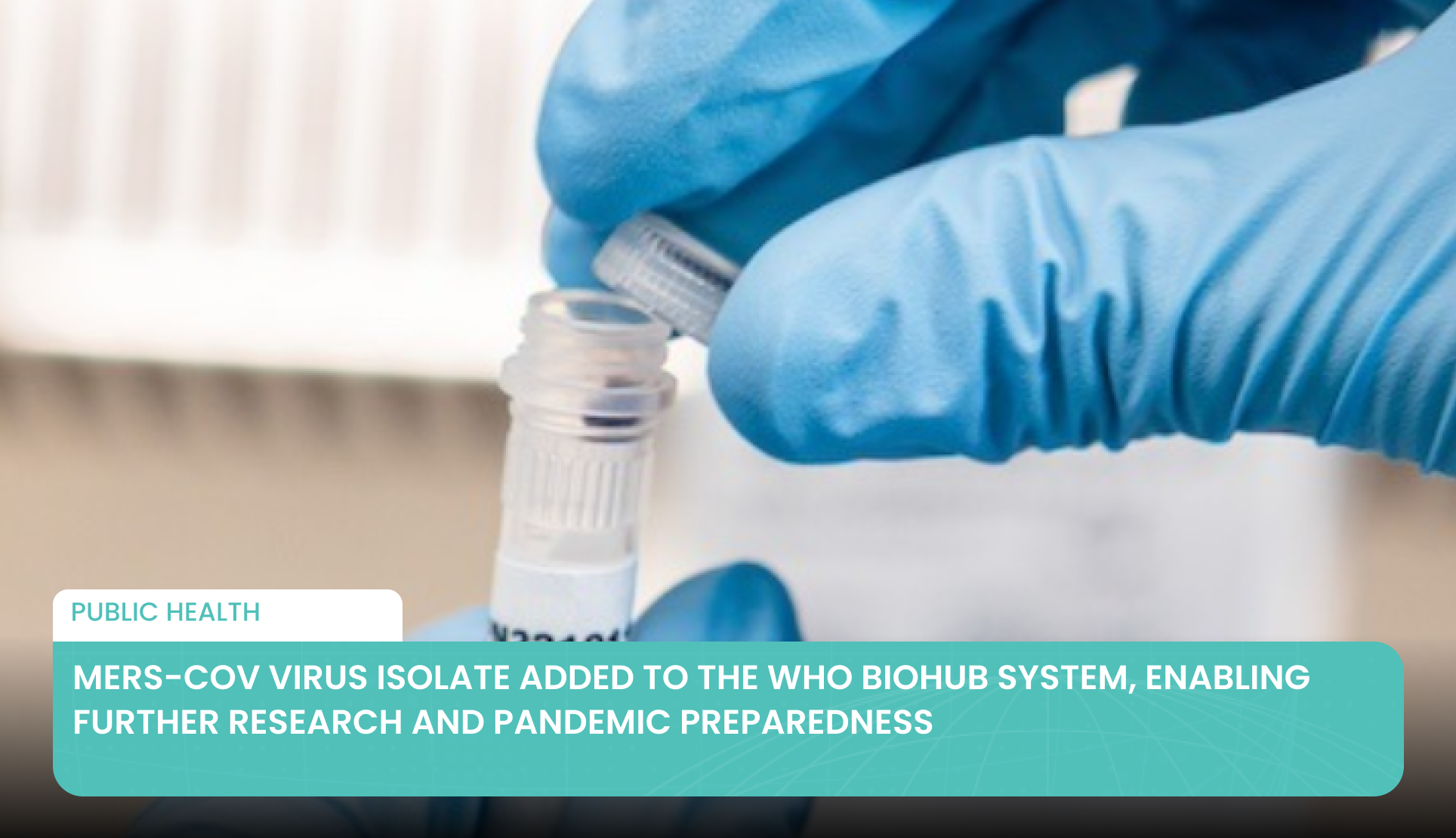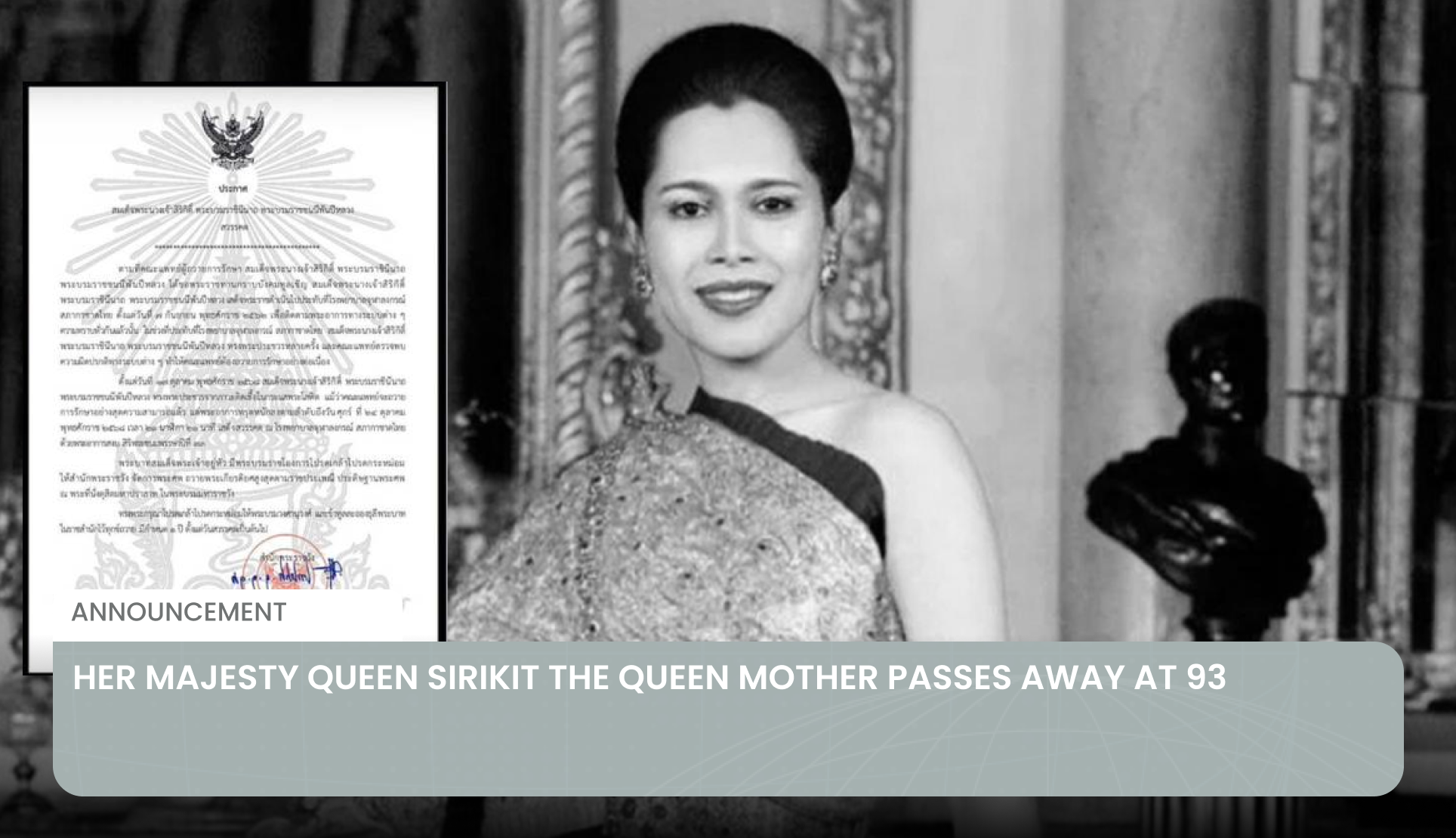
MERS-CoV Virus Isolate Added to the WHO BioHub System, Enabling Further Research and Pandemic Preparedness
Geneva, 24 October 2025 – The World Health Organization (WHO) has announced that an isolate of the Middle East respiratory syndrome coronavirus (MERS-CoV) — one of three high-impact coronaviruses with pandemic potential — has been officially added to the WHO BioHub System.
Geneva, 24 October 2025 – The World Health Organization (WHO) has announced that an isolate of the Middle East respiratory syndrome coronavirus (MERS-CoV) — one of three high-impact coronaviruses with pandemic potential — has been officially added to the WHO BioHub System.
The WHO BioHub System enables countries to voluntarily share and request biological materials that have epidemic or pandemic potential. Established by the WHO Director-General during the COVID-19 pandemic, the initiative supports global pathogen characterization, research, surveillance, and risk assessment. In the future, it will further contribute to developing medical countermeasures such as diagnostics, vaccines, and therapeutics by ensuring rapid access to verified biological materials and essential data for scientific advancement and product development.
MERS-CoV, a zoonotic virus transmitted between dromedary camels and humans, can cause severe respiratory illness and death, with a fatality rate of approximately 37% of reported cases. Currently, no licensed vaccines or therapeutics are available for MERS.
“Since its identification, MERS-CoV outbreaks have been sporadic. Access to MERS-CoV isolates has therefore been limited, making it all the more important that the WHO BioHub System provides researchers with access to this virus isolate,” said Dr. Maria Van Kerkhove, Acting Director of WHO’s Epidemic and Pandemic Management Department. “By supporting timely and transparent sharing of biological materials such as the MERS-CoV isolate, the BioHub is helping the world prepare for future epidemics and, potentially, pandemics.”
Most MERS research to date has used clade A isolates, which are believed to have become extinct since 2015. The newly added isolate, derived from a camel, belongs to clade C, which is known to be widely circulating in African camel populations.
Recent pandemics and health emergencies have underscored the critical need for faster, fairer, and more reliable sharing of pathogens to accelerate global responses. In an interconnected world where infectious threats continue to emerge, timely access to biological materials is essential for scientific research and public health action.
The WHO BioHub System serves as a trusted and scalable mechanism that simplifies pathogen sharing through standardized agreements and procedures, ensuring rapid exchange while maintaining biosafety, transparency, and equity. Since its establishment, 76 laboratories from 30 countries across all WHO regions have participated in sharing and requesting biological materials through the system.
The BioHub has already played a key role in supporting the global response to major public health events — including facilitating the sharing of SARS-CoV-2 variants during the COVID-19 pandemic and enabling access to mpox materials during the 2023–2024 outbreak, which supported diagnostic validation and basic research worldwide.
In line with its guiding principles, the BioHub also fosters scientific collaboration and equitable partnerships between providers and requestors, ensuring inclusion in joint research projects, publications, and co-authorships. This reinforces the BioHub’s core values of transparency, fairness, and shared benefits across the global health community.
As of today, the BioHub collection includes 33 variants of SARS-CoV-2, mpox clades Ia, Ib, IIb, the Oropouche virus, and now MERS-CoV — marking a significant step forward in the system’s capacity to support preparedness for both known and emerging pathogens.
Currently, the Spiez Laboratory in Switzerland serves as the central WHO BioHub Facility, responsible for storing, characterizing, and distributing materials. Looking ahead, WHO aims to expand the BioHub network by establishing regional facilities in every WHO region, ensuring equitable access and rapid response capabilities worldwide.
This next phase will build upon the BioHub’s strong foundation by advancing regional scientific collaboration, strengthening biosafety and biosecurity, and enhancing global health security to better prepare the world for future threats.
Source:
Articles in this category are written by our editorial team to keep you informed about the latest healthcare and medical tourism news.

